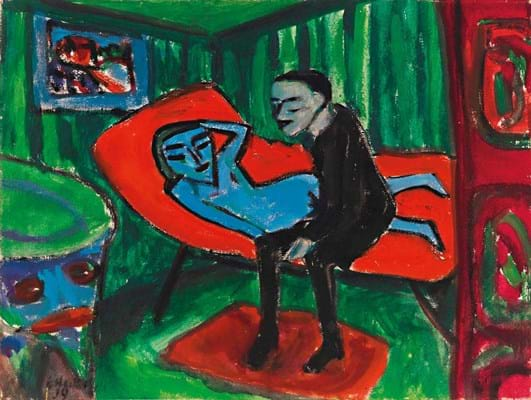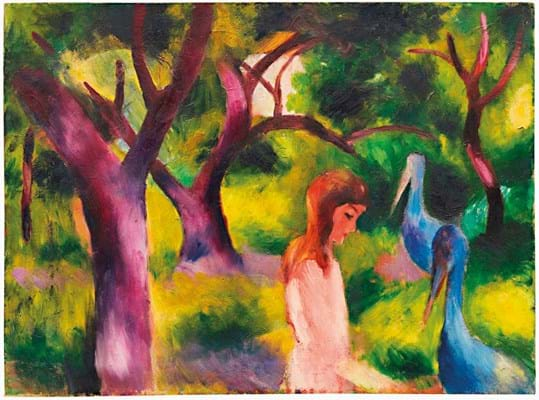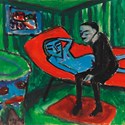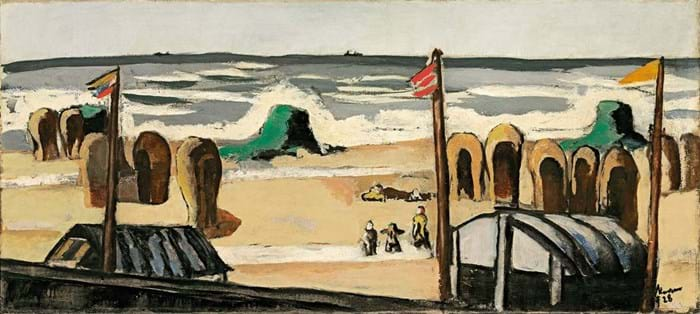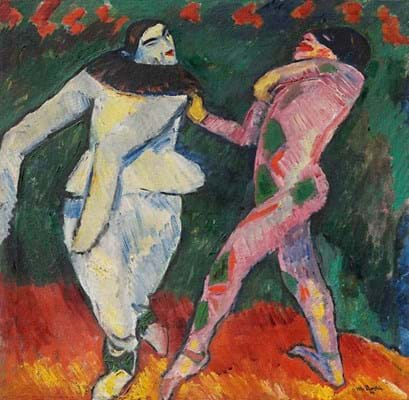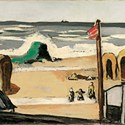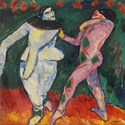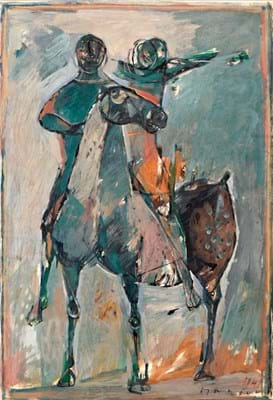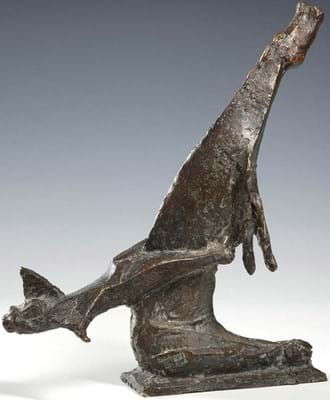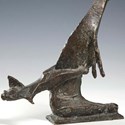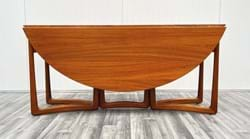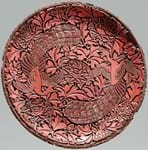The first 45 lots, works by German Expressionists – in particular by the artists of the Die Brücke (The Bridge) group – from the collection of the entrepreneur Hermann Gerlinger, all found new owners, many for substantially higher prices than the estimates.
For the last three decades, most of the works had been exhibited at German museums. On auction day, German institutions refrained from bidding, however; their place was taken by US museums, which secured several lots.
The top lot in this section of the June 10 sale went to a German collector in the room rather than a museum, though: it Erich Heckel’s early painting Kinder (Children) from 1909-10, which Gerlinger had purchased in 1975. It was knocked down for €1.1m (£924,370), almost doubling its lower estimate in the process.
The watercolour Gutshof (Farmhouse) by Karl Schmidt- Rottluff from the same period was driven from €80,000 to a final price of €240,000 (£201,680).
In contrast, the bidding match for the highlight of the other works in the sale was much shorter.
It was August Macke’s 2ft x 2ft 8in (60 x 82cm) painting Das Mädchen mit blauen Vögeln (The Girl with Blue Birds), painted in 1914, six months before the artist’s death in the First World War at the age of just 27.
Bidding started at €1.8m and, soon afterwards, one of two phone bidders sealed the deal at €2.1m (£1.76m), slightly higher than the lower guide.
Beckmann beach
Incidentally, the painting had once also belonged to the German collector Erich Raemisch, one-time owner of the painting Grauer Strand (Grey Beach) by Max Beckmann – which had achieved a seven-figure price at Grisebach (25/20% buyer’s premium) in Berlin on June 2.
This work was executed by Beckmann in 1928. A year later, it was purchased by the silk manufacturer Raemisch and remained in the family until 2008, when it was sold to a Swiss collector, who now consigned it to Grisebach.
Against a guide of €1m-1.5m, it was knocked down to a European collector for €1.45m (£1.22m).
Since 1956, when it was last sold at auction, Hermann Max Pechstein’s 3ft 3in (1m) square canvas Russisches Ballett (Russian Ballet) had been in a private collection.
It fulfilled its expectations as the top lot among these Selected Works that Grisebach had on offer.
Bidding started at €1.6m and after a brief exchange the painting was knocked down to a local collector for a lower-estimate €2m (£1.68m).
It was created by Pechstein in 1909, soon after he had witnessed a performance by the Russian Ballet in Berlin, choosing the figures of Harlequin and Pierrot for his motif and creating one of the iconic works of German Expressionism.
Since the 1950s, the painting has regularly been shown at museum exhibitions. It remains to be seen if the new owner will continue the tradition.
Marini horsepower
Two very different treatments of Marino Marini’s quintessential subject matter were much in demand at the Dorotheum (28/25/22% buyer’s premium) sale of Modern art on May 31 in Vienna.
For decades, the theme of cavallo e cavaliere (horse and rider) was central to the Italian artist’s oeuvre. In an interview from 1975, Marini described the motif as “a form that is first joyful, then becomes tragic, then destructive”.
In 1949 he executed an untitled horse and rider-motif in ink and tempera on paper. The 19 x 13in (48 x 33cm) composition had never been on the market: it was given to a Swiss collector by the artist and passed by descent to the current consignor, who had been expecting to receive €25,000-35,000 from the sale.
In the event, a European private collector had to bid €165,000 (£138,655) to claim their prize.
Plenty of contenders also competed for a 17½in (44cm) high bronze, Piccolo Miracolo (Small Miracle), from 1955-56, one of an edition of seven casts.
The dramatic portrayal of a horse and rider belongs to a series of seven figures Marini created under the title ‘Miracoli’.
He began the series in 1943 and was greatly influenced by his war experiences. After the bombing of Milan in the 1940s, Marini fled to Switzerland where he spent the rest of the war.
His figures became metaphors for the inability of man to control his circumstances; in the same way, the rider appears more and more incapable of controlling his horse.
The bronze in Vienna had a guide of €180,000-280,000; the hammer fell at €360,000 (£302,520). Once again, a European collector had the most staying power.
Viktor Brauner’s Twist Lesson from 1962 (previewed in ATG No 2542) danced its way to a new owner for €210,000 (£176,470), a good way over the estimate.


